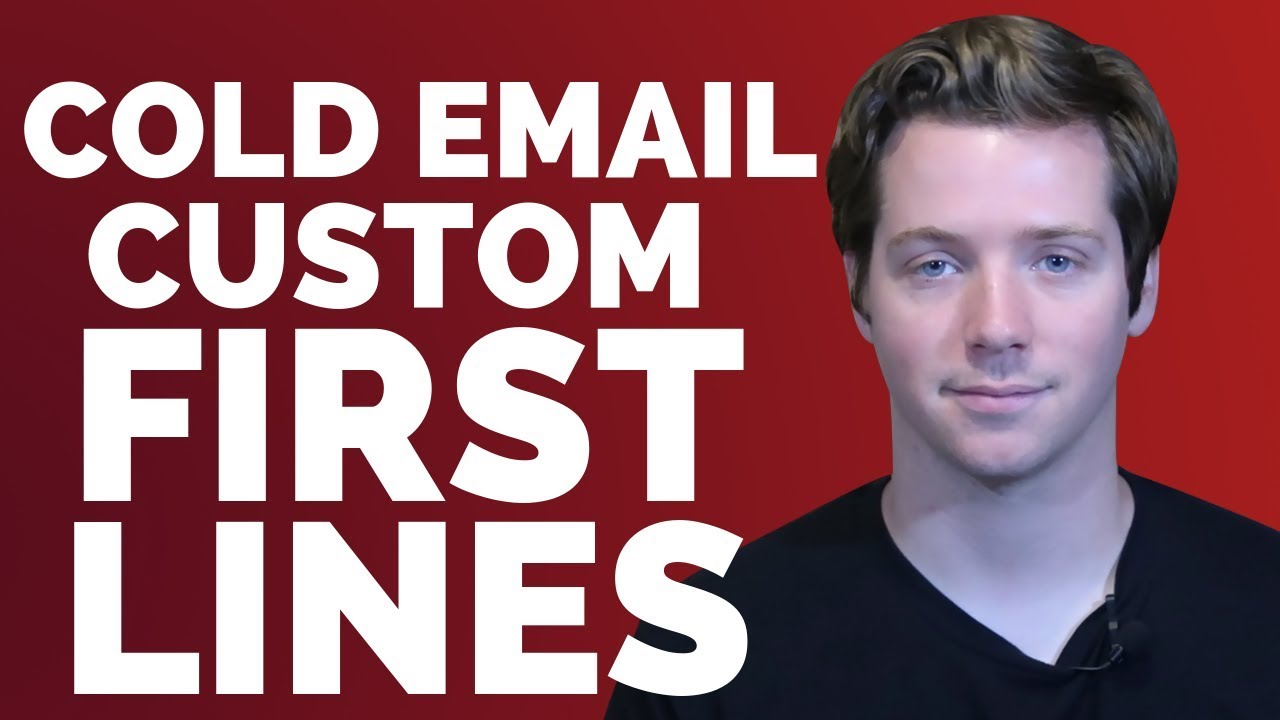If you're a marketer or a professional in any industry that uses email as a means of communication, you've probably heard of email personalization.
What you may not realize is that personalization in emails is essential for reasons that we'll go over a little later in this post.
Furthermore, in this guide, we'll define email personalization and provide four email personalization tactics to help you get responses.
Before we go any further, we should discuss the type of personalization we'll be discussing, which is in relation to emails sent for businessand professional purposes.
Let's begin with a brief definition of email personalization.

15 Ways To Write And Personalize A First Line In A Cold Email
What Is Email Personalization?
Email personalization is when you include data from your prospects and subscribers, such as the subscriber's name or the company they work for, in your email body or subject line to demonstrate that you've tailored the contentfor them specifically.
In other words, personalized emails are those that include dynamic content, such as custom fields – AKA variables – that are differentiated from one another based on data points you know about them, even if they are sent in bulk to your email list.
To increase click-through rates, you could personalize your emails based on demographics, a client's purchase history, time zone, past behavior, and other interests. The ultimate goal here is, of course, to increase conversion.
Customer data segmentation, in conjunction with any other information you may have for the email recipient, enables you to send personalized and targeted emails, which can significantly increase your email open rate metrics.
We'll go over that in greater detail later in this post.
For the time being, let's just say that email personalization is all about treating your email recipients as individuals, demonstrating that you cared enough to customize some parts of your content and that it's not just your email outreach tool sending out generic emails.
It makes a huge difference, for example, to receive an email that begins with your first name, such as:
Hello, Farzad.
Rather than one that begins with a simple:
Hey,
Worse case scenario:
Hello, {first name},
This means that someone most likely used a pre-made email template and forgot to change the custom field before pressing the send email button.
Oopsie!
Simple personalization strategies such as adding a personalized emailsubject line, the person's name in the opening line, or a personalized email signature can help you hit the mark in the email outreach game and generally elevate your marketing campaigns.
We've now discussed what email personalization is all about and why it's important.
As a HubSpot study shows, the importance and value of personalization extends to all aspects and elements of your business, including, for example, the CTAs on your website.
Let's now go over four different reasons why you should personalize all of your emails going forward.
What Is The Importance Of Email Personalization?
- Gives the customer a new experience as a reward. Brands' primary goal is to understand the subscriber's personality. With this mindset, reading emails becomes a pleasurable and exciting experience. Personalization removes any annoyance from the user's experience and replaces it with positive emotions.
- Improves the relationship Personalization tends to humanize seller-buyer communication. Personalized emails are highly valued because each subscriber believes that brands examine and respond to their preferences and needs. Personalization raises shared value, and both parties benefit.
- Utilization of all email opportunities. People nowadays are inundated with emails on a daily basis. When a brand properly personalizes emails, the potential of email as a marketing medium is reduced. As a result, fewer emails are required to achieve results. Respect is demonstrated by reducing informational noise in the inbox.
- Email marketingis a must-have. Because of triggered (event-based) emails, email personalization is becoming more precise and sophisticated over time. Many tools are available on the market to help you implement personalization in your email marketing campaigns. If you still don't personalize your email campaigns but want to give it a shot, check out SendPulse's email service's useful and handy email personalization tools.
Personalized Email Examples
- An email with a unique subject line. It is an example of the simplest way to personalize emails, and it works, visually standing out from the crowd.
- Email with an abandoned shopping cart. Adidas reminds subscribers of the product they did not purchase and adds a bit of time sensitivity, stating that this pair will only be available for ten days.
- Segmented email marketing. Because of the preferences discussed during the subscription, this email about animals arrived in inbox.
- Birthday greetings via email. Converse emails, such as this one, are sent using the subscriber's birth date as a trigger. The main goal of this email is to make a sale while also eliciting positive emotions.
- Reactivation email. It's an excellent example of a Virgin Experience Days renewal email. It's emotional, and it earns you a $10 discount on your next purchase.
Marketers use subscriber data within their email content to make the content feel tailored to the individual as part of the personalization process. An increase in open rates of up to 760 percent has been proven because it helps marketers provide subscribers with more personalized content.
Marketers are using this tactic to move away from mass messaging and instead make their subscribers feel like VIPs by gathering subscriber data (like a first name) and segmenting subscribers into more detailed lists.
Imagine being able to communicate with each and every one of your subscribers as if they were close friends. With your personal touch and attention to detail, you'll be able to build a strong relationship with your customers and keep them coming back.
You'll see an increase in the number of subscribers who look forward to receiving your emails.